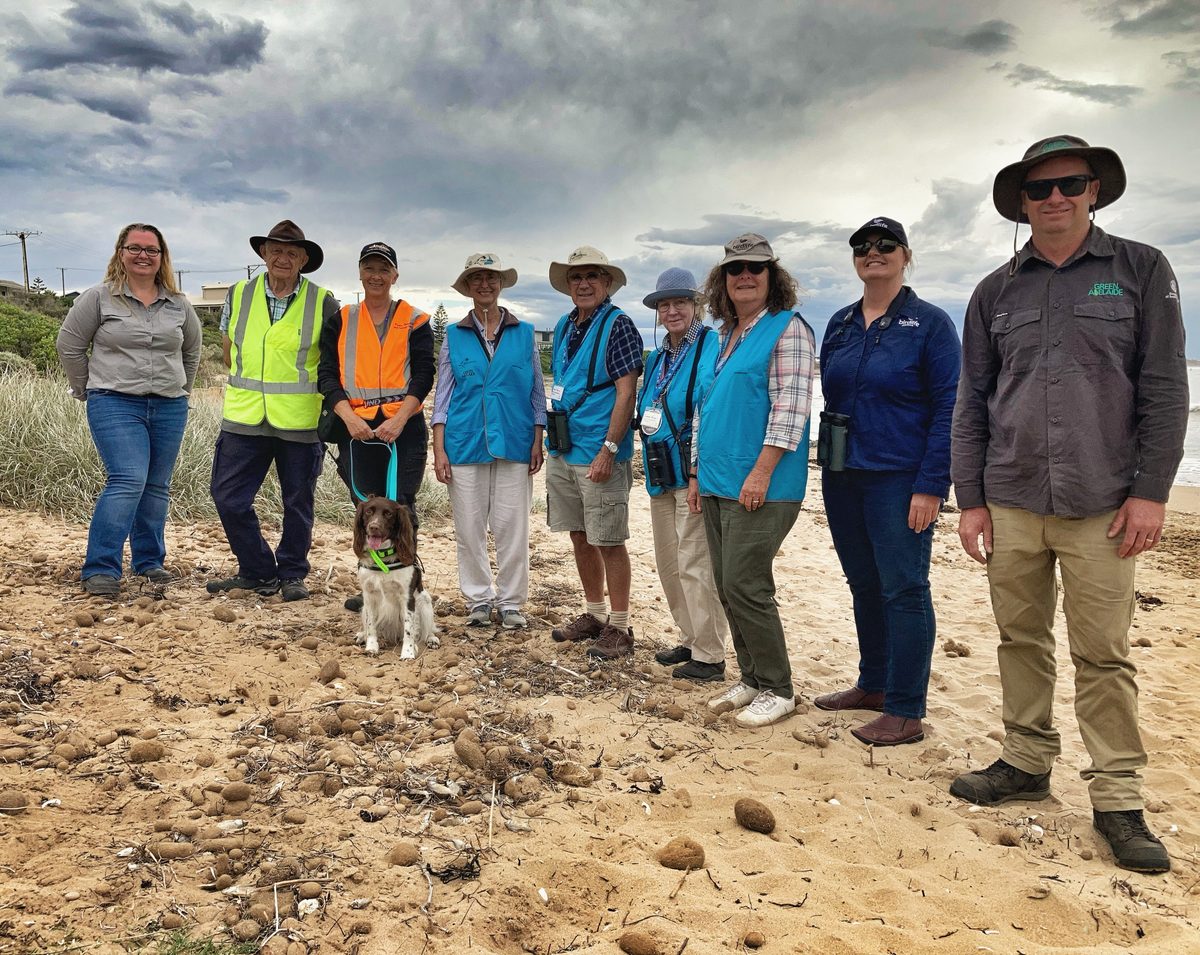3 savvy solutions for invasive species threatening South Australia
Invasive species like foxes, feral cats and declared weeds are deadly to our native animals and pose a serious threat to our environment, agriculture and even our health.
Feral cats alone have played a major role in the extinction of 27 native species since colonisation and many more face an uncertain future. In addition to the loss of biodiversity, pest species are seriously hurting our economy’s hip pocket. A 2021 research paper calculated the cost of invasive species to Australia at $389.59 billion and rising.
Working smarter is how South Australia’s 9 landscape boards are tackling this issue, and as you’ll read, they’re making inroads with a range of savvy solutions
Dogs to detect fox dens


In an effort to protect Australia’s most threatened beach-nesting birds, Green Adelaide has enlisted the services of a trained conservation dog to detect the dens of one of their biggest threats – European foxes – on Adelaide and neighbouring Hills and Fleurieu beaches.
Nessie, an English springer spaniel, took just minutes to sniff out elusive fox dens that would have taken human conservation teams hours to find.
Foxes are a significant threat to hooded plovers’ eggs and chicks, with disturbance by people and off-lead dogs also a major concern.
Detecting and managing fox dens aims to disrupt patterns of fox behaviour, such as foraging on beaches and targeting nests, to provide respite to breeding birds and improve their chick’s chance of survival.
Drones target weed infestation along creek line

Drone technology is tackling a plague infestation of the pest plant noogoora burr that has travelled 19km along a creek in the state’s mid north.
The declared weed, which was identified as an increasing issue in the area 3 years ago, is a threat to local grazing farmers as its burrs easily tangle in wool.
Its invasion along Amyton Creek also means that Willochra Creek and Lake Torrens further downstream are at risk of invasion with the next major rains.
The Northern and Yorke Landscape Board has worked with 12 landholders along the creek to deploy drones that map and then spray the infestation.
The process involved a drone contractor mapping a 100-metre-wide stretch of the 19km terrain with a specialised mapping drone that takes high resolution video and distinguishes the noogoora burr from native vegetation based on colour identification.
With the data processed, a spray drone carrying a mix of water and spray material was then used to treat the noogoora burr plants along the creek line safely and efficiently.
Barn owls swoop in to replace feral cats

The Kangaroo Island Landscape board has set a target to eradicate feral cats from the island, starting with the 38,000ha Dudley Peninsula. And they’re already thinking ahead to how they’ll manage potential mouse invasions when the cats are gone.
Taking inspiration from the use of nest boxes as part of the Northern and Yorke Landscape Board’s Marna Banggara project, the KI Landscape Board has erected a series of specially-designed barn owl nest boxes to help the native predator replace the work of feral cats by preying on introduced mice and rats.
Data shows owls can bring back over 25 mice to one box each night.
The boxes on Kangaroo Island are also equipped with solar-powered, 4G-connected cameras to record the barn owls’ activities and breeding success.
Images from the cameras are connected to an artificial intelligence system that sorts them ready for the team to view each morning.
The boxes also feature a perch on the front of the nest box which is a perfect stage for fledglings to gather and practice their flying techniques.



